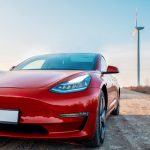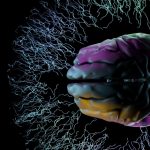Within the Giga Berlin facility, self-driving technology is taking a visible role in vehicle logistics as Tesla introduces Unsupervised Full Self-Driving (FSD) features to manage the movement of Model Y vehicles. By using self-driving capabilities on-site, Tesla aims to streamline production processes and optimize internal vehicle handling. The integration of this technology occurs solely within the factory premises, ensuring a controlled environment as the company navigates the complex European regulatory landscape. Tesla’s approach reflects an ongoing trend toward automating industrial workflows, yet still leaves customers waiting for broader public use. These recent developments hint at future directions while remaining confined to Tesla’s operational grounds. This application provides insight into how manufacturers can adopt advanced driver assistance technologies before full regulatory approval is secured for consumer use.
Earlier attempts by Tesla to bring FSD features to Europe have faced significant regulatory barriers, resulting in limited availability for consumers across the continent. While earlier demonstration drives in countries like France and Germany highlighted technical readiness, these trials remained under controlled test conditions. In contrast to the North American and Chinese markets, prospective buyers in Europe continue to wait for the technology’s public road approval. Tesla’s in-factory deployment now shifts the focus from public testing to practical, day-to-day manufacturing benefits, setting a different precedent than earlier public demonstrations.
How Is Tesla Using Unsupervised FSD at Giga Berlin?
Tesla has started employing Unsupervised FSD for moving Model Y vehicles at the Giga Berlin plant. Newly assembled cars autonomously navigate from the end of the production line to charging stations and designated outbound yards without human input. This process reduces manual intervention and may lower operational costs related to moving vehicles within the factory grounds.
Why Is This Deployment Limited to the Factory?
European regulatory requirements have restricted Tesla’s FSD rollout to controlled environments, such as the Giga Berlin site. The localized use of self-driving technology allows Tesla to utilize its advanced systems while mitigating regulatory risks and potential safety concerns associated with unsupervised public operation. According to Giga Berlin plant manager André Thierig,
“Every Tesla we built has the ability to drive autonomously and we use this feature 100% for outbound operations, starting from the light tunnel until the car arrives at the outbound yard!”
Tesla remains cautious as wider European permissions are still under review.
What Are the Broader Implications for Tesla Owners?
Tesla owners in Europe who purchased vehicles with FSD have not yet received access to full autonomous capabilities on public roads. The current use of Unsupervised FSD within factory premises signals incremental progress but does not resolve the broader wait for consumer availability. Thierig expressed anticipation about wider use, stating,
“I cannot wait to see this on European roads outside the factory.”
Until further regulatory decisions are made, owners are likely to continue facing delays in accessing these features beyond limited demonstrations.
Tesla’s strategy of internal deployment at its manufacturing facility contrasts with previous strategies that focused on public road testing and customer experiences. By leveraging Unsupervised FSD in a secure, controlled setting, Tesla manages to put its self-driving technology to productive use while navigating the complex approval process required for consumer deployment in Europe. Entities considering similar technologies in manufacturing may regard this move as a practical example of how automation can be implemented within organizational boundaries under current legal conditions. For European consumers, however, the distinction between internal industrial application and public availability remains significant. Ongoing developments in regulation and further technical validation will shape the timeline and nature of broader FSD rollouts, impacting customer expectations and Tesla’s operational strategy in Europe.










